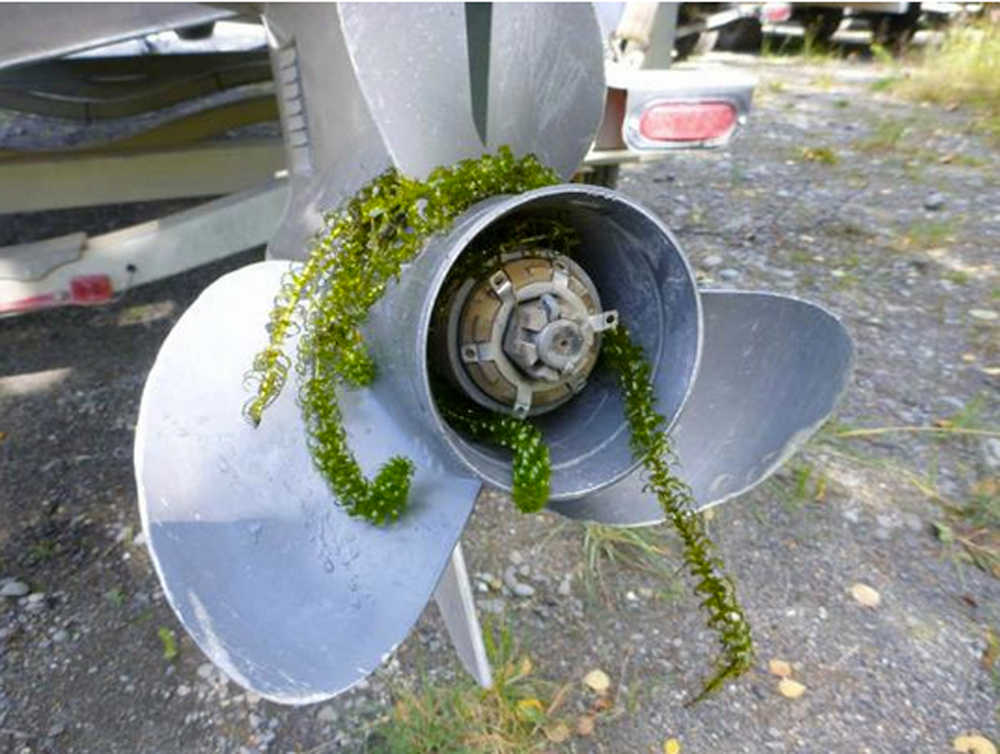A bill to help control Alaska’s elodea infestation was pulled out of the legislature on Monday after the Alaska Division of Agriculture quarantined the invasive aquatic plant from the state.
The bill, sponsored by Reps. Kurt Olson, R-Kenai, Paul Seaton, R-Homer, and House Speaker Mike Chenault, R-Nikiski, called for prohibiting the import, sale, purchase and release of elodea into Alaskan waters.
However, the Division of Agriculture was able to establish the quarantine and immediately make elodea illegal without the legislative process, Olson said.
“It was a happy ending,” Olson said. “We got done much faster than waiting two months for it to be signed into effect.”
Olson said Kenai Peninsula Borough Assembly Member Kelly Wolf had brought the elodea issue to lawmakers’ attention.
Wolf said the borough is seeking funding to eradicate the plant from three infested lakes on the Kenai Peninsula but questioned how eradication can be successful when the plant is commonly sold for aquariums and school classes.
“All it would require would be somebody to dump out an aquarium inside a lake … and then you’ve got (an elodea) transport,” Wolf said.
Wolf said the Division of Agriculture’s regulatory act carries the same weight as a prohibition on the plant issued by the legislature.
Brianne Blackburn, Natural Resource Specialist with the Division of Agriculture, said elodea can lead to boat, float plane, recreation and fish habitat issues.
Five aquatic invasive plants are now quarantined following the establishment of the regulation. Two are documented elodea species in Alaska — Canadian waterweed and western nuttallii. The other three aquatic plants have not been documented in the state outside of the aquarium industry — Brazilian waterweed, hydrilla and Eurasian watermilfoil. Blackburn said last three were included in an attempt to keep them out of Alaskan waters.
The efforts are being made to develop a statewide strategy on dealing with invasive plants, Blackburn said, but a project of that scale is difficult to accomplish. She said Anchorage, Fairbanks and the Kenai Peninsula areas are working to develop plans. With the way elodea reproduces — without seeds — she said the focus needs to be on controlling the infestation.
The Kenai Peninsula Borough has taken steps to fight elodea in Beck, Daniels and Stormy lakes. In its fiscal year 2014 budget, it allocated $40,000 to purchase the herbicide Diquat. However, a more intensive program is necessary to fully eradicate elodea from the lakes.
“I think the Kenai area is taking steps to really protect the Kenai at this point and doing the rest of the water bodies in the state a huge favor in eliminating one pathway,” Blackburn said.
The borough included elodea eradication in both its state and federal capital improvement project priorities; the planned eradication program came with a $700,000 price tag. The program calls for the use of an herbicide called Fluridone, which, according to the project description, doesn’t appear to have any short or long-term effects on fish or birds.
“Somebody has to start somewhere,” Wolf said. “The Kenai Peninsula Borough just was the entity that started it first. … We can only try to lead by example. And that’s what we’re trying to do.”
Blackburn said elodea was first documented in Alaska in the Cordova area in the early 1980s, but wasn’t to the point of concern. In 2010 it was discovered in the Chena Slough in Fairbanks taking up 80-90 percent of the growth space in a 10-mile stretch of the slough.
The discovery led to an inventory of other lakes in the state, she said. Elodea was found in about 15 water bodies across the state including in Anchorage, the Kenai Peninsula and Cordova.
“Given the massive amount of water we have in the state, that’s a very small number,” Blackburn said. “We still consider it pretty limited distribution in the state.”
Elodea likely went unnoticed, she said, because people weren’t looking for it.
However, the permitting for chemical eradication can be a slow process requiring approval from the Division of Mining, Land and Water, the Department of Fish and Game and the Department of Environmental Conservation, she said.
She said the key to preventing introductions and re-introductions is to educate the public about how to stop the transfer of the plant by cleaning equipment.
Blackburn said the quarantine applies to intentional movement. She said people are asked to be aware of the issue and clean their equipment, but if elodea is accidentally transferred via a float plane, for example, that would not count as intentional movement.
She said the division is reaching out to vendors and schools to let them know about the change and how to dispose of any elodea they possess.
“This is a good, proactive step — the quarantine is — to help protect our resources,” Blackburn said.
Kaylee Osowski can be reached at kaylee.osowski@peninsulaclarion.com.

